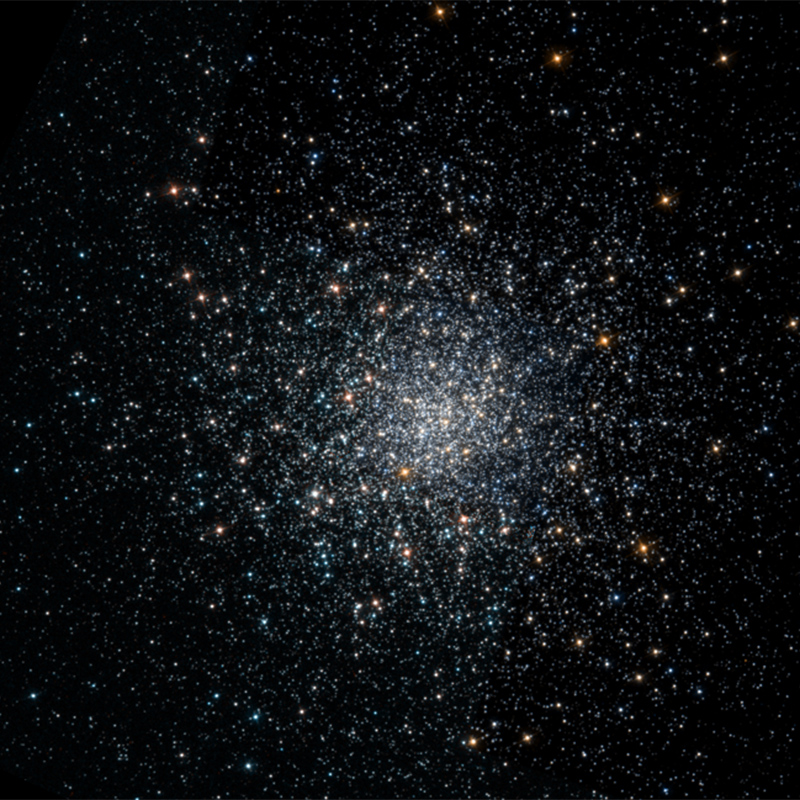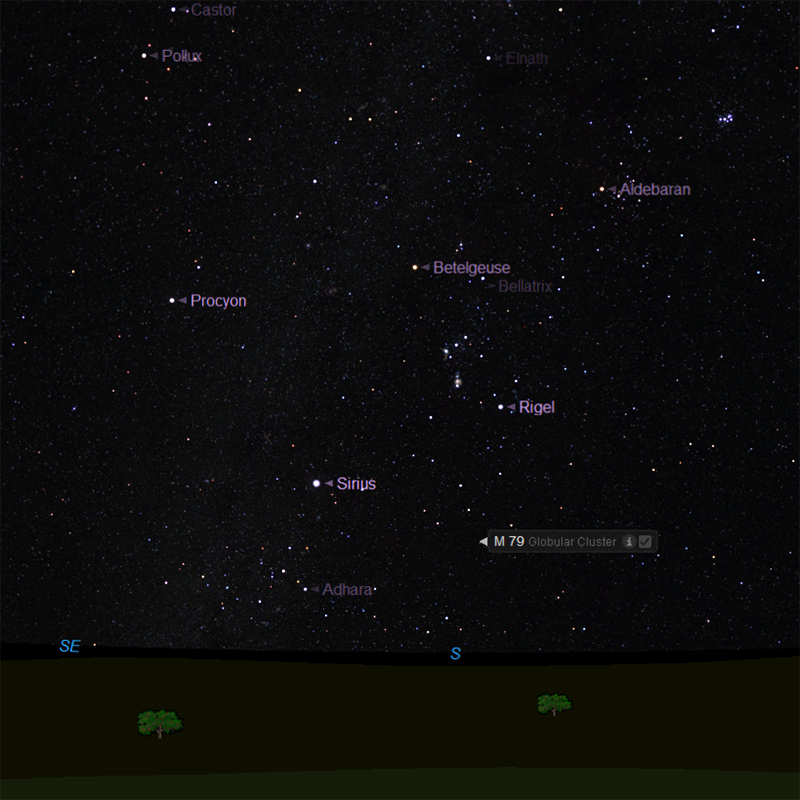M79

Credits: Based on observations made with the NASA/ESA Hubble Space Telescope, and obtained from the Hubble Legacy Archive, which is a collaboration between the Space Telescope Science Institute (STScI/NASA), the Space Telescope European Coordinating Facility (ST-ECF/ESA) and the Canadian Astronomy Data Centre (CADC/NRC/CSA)
Messier 79 (M79) is a globular cluster located in the northern constellation Lepus, the Hare.
The cluster lies at a distance of 41,000 light years from Earth and has an apparent magnitude of 8.56. It has the designation NGC 1904 in the New General Catalogue.
Messier 79 contains about 150,000 stars.
Most of them are red giants and there are also many blue stragglers, old stars that appear younger and bluer than their neighbours as a result of interactions
and collisions with other stars in the densely populated core of M79. The estimated age of M79 is 11.7 billion years. The cluster is receding from us at about 200 km/s.
Facts about M79 by Keith Turnecliff
Messier 79 was discovered by the French astronomer Pierre Méchain on October 26, 1780.
Méchain reported his discovery to his friend Charles Messier, who determined the position of the object and added it to his catalogue on December 17, 1780.
The best time of year to observe the cluster is during the winter.

Best viewed with resolution 3840 x 2160.
Credits: Image courtesy of Starry Night Pro Plus 8, researched and implemented by Keith Turnecliff.